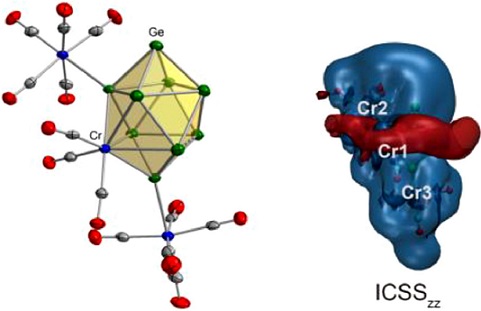[(CrGe9)Cr2(CO)13]4−: A disubstituted case of ten-vertex closo cluster with spherical aromaticity
Submitted by Jun Zhu on Thu, 09/02/2021 - 10:20
We report the first disubstituted hetero-ten-vertex closo cluster [(CrGe9)Cr2(CO)13]4- with three adjacent Cr(CO)n units adopting both η5 and η1 coordination modes, which was synthesized through the reaction of “KGe1.67” with (MeCN)3Cr(CO)3 and Cr(CO)6 in ethylenediamine (en) solution. In contrast to the η1-Cr atoms forming localized two-center two-elelctron (2c-2e) Cr-Ge bonds, the hetero atom η5-Cr exhibits versatile bonding mechanisms including three 5c-2e and five 8c-2e delocalized bonds which account for Hückel aromaticity.


